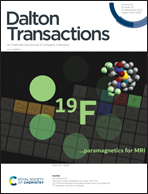Porous Ni3Fe intermetallic compounds as efficient and stable catalysts for the hydrogen evolution reaction in alkaline solutions
Abstract
It is crucial to develop cost-effective novel non-noble metal catalysts with high activity and durability for large-scale industrial hydrogen production via water splitting. Here, based on a facile powder metallurgy method, Ni3Fe intermetallic electrodes with porous structures and controllable phases have been designed and fabricated by sintering mixed Ni and Fe powders under an Ar atmosphere. The effects of sintering temperature on the morphology, porous structure and phase composition of the intermetallic were studied. The resultant Ni3Fe-900 intermetallic electrode exhibits promising HER activity in alkaline electrolytes with an overpotential of 112 mV to drive a current density of 10 mA cm−2. Additionally, the Ni3Fe-900 intermetallic electrode shows good alkali corrosion resistance and stability in the HER process at a current density as high as 500 mA cm−2 for 24 h with no significant changes of the surface morphology, porous structure and phases. The efficient HER performance of the Ni3Fe-900 electrode is attributed to the unique intrinsic activity of the intermetallic electrode, increased accessible active sites originating from the porous structure and accelerated charge transfer. This work provides new insights into the design of electrocatalysts for industrial large-scale hydrogen production by water splitting.



 Please wait while we load your content...
Please wait while we load your content...